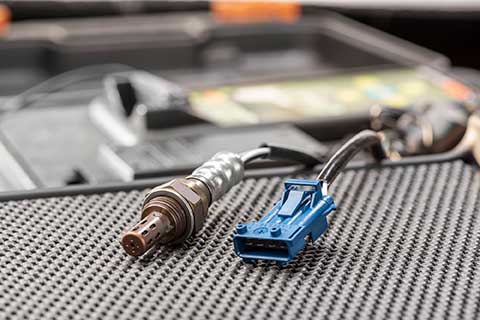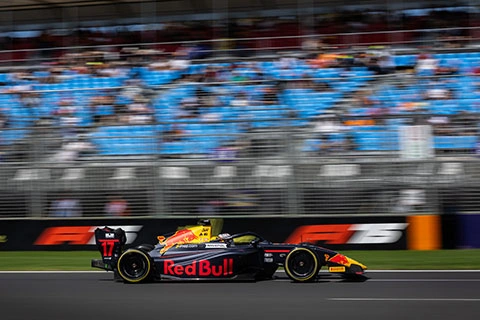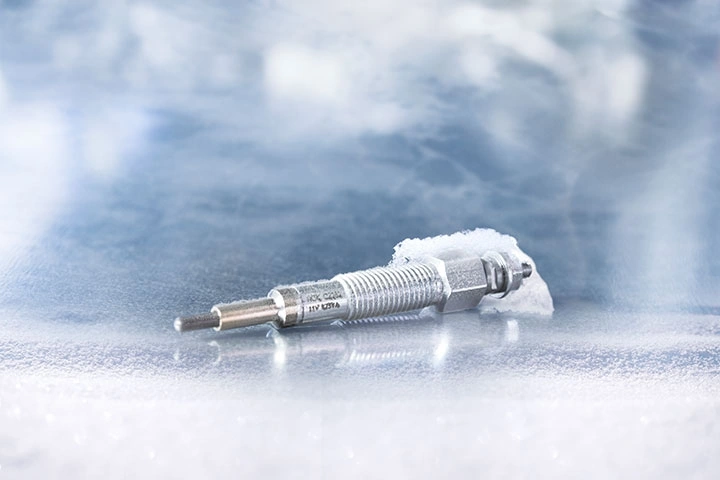You asked Google & NGK SPARK PLUG answers! – Part 5: Oxygen sensors

1. What does an oxygen sensor do?
Also known as a ‘lambda sensor’ or an ‘O2 sensor’, an oxygen sensor ensures ideal conditions for the catalytic converter by providing constant measurement of the air-fuel ratio. The optimum air to fuel mixture for an internal combustion engine is one that has a ratio of 14.7kg air to 1kg fuel: This specific air-fuel combination is called the stoichiometric ratio, which corresponds to a value of lambda 1. This ratio, however, isn’t automatically guaranteed, which is the reason why oxygen sensors play such an important role.
2. How do oxygen sensors work?
Oxygen sensors measure the percentage of oxygen in the exhaust system and then report this information back to the vehicle’s engine control unit (ECU). Often, the air-fuel mixture is either too rich or too lean for the catalytic converter to do its job properly. If the mixture is too rich, the exhaust system contains not enough oxygen, while if the mixture is too lean, there is too much oxygen present. In both cases, ultimately, an efficient function of the catalyst is not possible. To counter this, the oxygen sensor relays its findings to the ECU which then adjusts the air-fuel mixture as close to lambda 1. This results in more efficient combustion, which not only benefits the environment by decreasing emissions, but also results in fuel savings and a reduction in engine wear and tear.
3. What causes an oxygen sensor to fail?
A bad or failing oxygen sensor can be due to many reasons. While an oxygen sensor needs to be replaced due to general deterioration over time, other avoidable factors can result in the need for premature replacement. These include the sensor coming into contact with fuel additives, silicon and carbon deposits.
4. What are the symptoms of a faulty oxygen sensor?
There are many symptoms to look out for, with the most obvious being that a ‘check engine’ light is activated on the car’s dashboard. Other indications include: rough idling and stalling, reduced fuel economy.

5. How many different types of oxygen sensors does NTK Vehicle Electronics offer?
NTK Vehicle Electronics offers three different types of oxygen sensors: zirconia sensors (also called voltage jump sensors, binary sensors and oxygen zirconia automotive sensors), titanium sensors (also called resistance jump sensor, titanium oxide sensor) and linear sensors (also called wideband sensors and broadband sensors). The company is the world’s largest supplier of Original Equipment oxygen sensors and among the leaders in the Aftermarket.
6. Where is the oxygen sensor located?
Oxygen sensors are located in the exhaust system. In modern cars, each exhaust pipe contains one catalytic converter, with each catalytic converter having two oxygen sensors, one upstream and one downstream. Located before the catalytic converter, the upstream oxygen sensor gauges the level of pollutants directly emitted from the engine as well as sensing any unburned fuel that comes from the combustion chamber. The downstream oxygen sensor, on the other hand, is situated directly after the catalytic converter. This measures the pollutants that have made it through the catalytic converter. Data between both sensors is compared and if similar readings are identified in both, the ECU turns on the dashboard’s ‘check engine’ light.
7. How do you replace an oxygen sensor?
The replacement of an oxygen sensor is a quick and simple procedure. Once the engine is cool and the vehicle is raised, the faulty sensor should be located and disconnected. An oxygen sensor socket should be used to loosen the sensor; it can then be fully removed by hand. Before screwing in the new sensor, it is recommended to apply anti-seize to the threads (if the threads are not already coated), making sure that none of it makes contact to the sensor itself. After this, the new sensor can be screwed in by hand and tightened to the correct torque specifications (18mm = 35-45 Nm and 12mm = 18-23 Nm) and reconnected. For more detailed information, please check the video.
8. What happens to the car if a bad oxygen sensor is not replaced?
This will mean that the ECU will not be able to set the correct air-fuel ratio. This will result in poorer fuel economy, high emissions and potential damage to other engine components or catalytic converters. Faulty sensors are identified by the ‘check engine’ light and should be replaced immediately.
9. How do you test an oxygen sensor?
An oscilloscope can be used to check if an oxygen sensor is working correctly. This tool graphically displays the oxygen sensor’s output as it switches voltage from high (0,9V) to low (0,1V). Once the oxygen sensor is disconnected, however, for the majority of oxygen sensors a common multi-meter can be used to examine heater resistance. The resistance will read as an open circuit if there is a faulty heater element present in the oxygen sensor.








